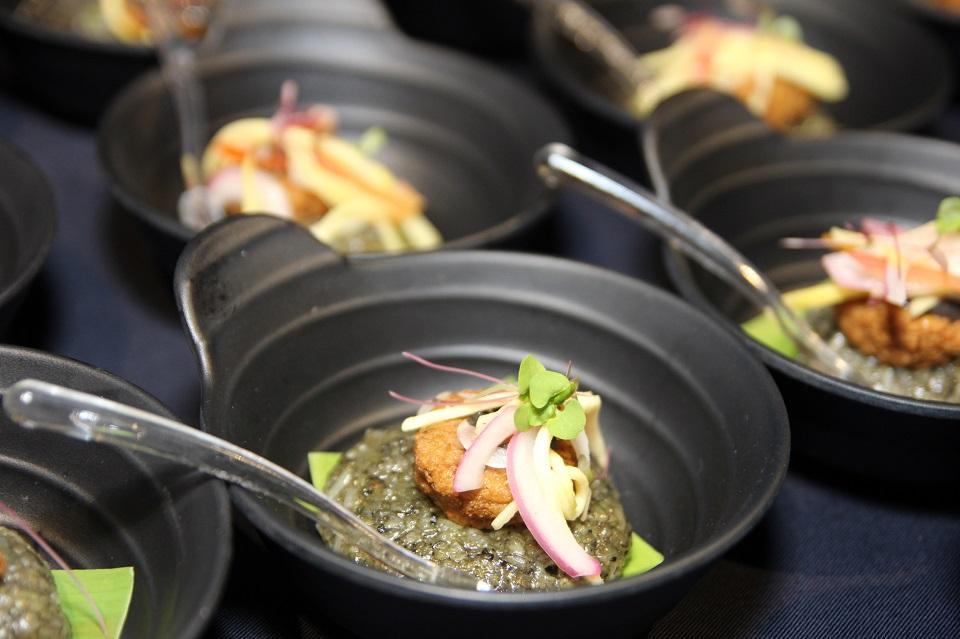Sustainability, inaugural LTB Icon Awards highlight Madrid Fusion Manila
The 2017 edition of the Madrid Fusion Manila was my second time to go as a delegate, but my first time to really appreciate and immerse myself into this world-class event happening from April 6 to 8 at the SMX Convention Center in Pasay City.
The big theme of the event, separated into the congress/seminar, exposition, and regional lunch segments, is food sustainability: a direction and advocacy of the world’s best chefs that should ensure future generations can still experience the gastronomy delights that we are enjoying right now.

Coinciding with the 3rd edition of Madrid Fusion Manila is 2017 being named as the International Year of Sustainable Tourism. As tourism—domestic or international—and dining go hand-in-hand, now is the right time to emphasize traveling and eating responsibly.
Buzz words like farm-to-table, locality, seasonality, and organic are no longer reserved to high-end or fine-dining dishes but are beginning to penetrate into the mainstream and casual food scene as well.
World-renowned chefs, led by the Philippines’ own Josh Boutwood of The Test Kitchen (“From Trash to Treasures”), Jordy Navarra of Toyo Eatery (“A Filipino Cuisine: Sustainability through Practicality”), and Robby Goco of Cyma (“It’s Goat to be Back”) will give talks throughout the three-day event.
Another Filipino chef, Ten Most Outstanding Young Men (TOYM) Awardee in Culinary Arts Gene Gonzalez, gave the opening presentation and concentrated on the topic of “Elements of Culinary Development.”

Chef Gonzalez shared how Filipino food, a cuisine that is slowly being recognized globally, is also coming to a full circle historically. Tabon-tabon, a tropical fruit used by our ancestors as an antiseptic to combat their diet of consisting mainly of raw fish, was utilized more for practical uses rather than for taste. This method of using citrus fruit to ferment raw fish or seafood is now evident in our kinilaw, ceviche of Latin America and Caribbean countries, and yuzu-based Japanese dishes.
Subsequent occupations of the Philippines by the Spanish, the Japanese, and the Americans and trade with the Chinese have also influenced our dishes: adobo (method and dish), fast food, and siopao and siomai have made their way into our everyday diet.
Aside from Filipino dishes making their way into Europe and the Americas through dishes like sisig, ube, and adobo, specific ingredients like mangos, chocolates, and the humble purple yam (ube) are making their way into the world’s kitchens. While the momentum for Filipino food is slowly gaining ground, there are headwinds and challenges that both government (national and local) and the private sector need to address.

A campaign of “national consciousness” through information dissemination and showcasing of Filipino food, similar to the “It’s More Fun in the Philippines” campaign of the Department of Tourism (DoT) should go hand-in-hand with the private sector’s initiative to partner with local farmers and offer authentic Filipino cuisine for would-be foreign visitors.
To emphasize the latter point, Gonzalez shared how foreign visitors would go to Philippine provinces in search of regional, home-cooked, and authentic dishes but are instead presented with Western options because the locals are afraid or are shy of offering their “ordinary” dishes.
LBT Icon Award
Les Toques Blanches (LTB) Philippines, a member of the World Association of Chefs Societies, also awarded its first Icon Award to restauranteur and author Glenda Barretto.
Barretto’s flagship restaurant, Via Mare, together with a number of Metro Manila and Luzon-based restaurants, served their best and most creative dishes with the theme of “Rice.” Interesting bite-sized dishes include the Rice on Rice (Innawi rice ball stuffed with Kesong Puti, watermelon gherkin, and catfish with duo of sauces: burnt eggplant and Balitinaw-fermented rice aioli and mustasa peso) of 5060 Bar and Restaurant; the WildRice smoked goat BBQ of The Smoking Joint, and a duo of stuffed Lechon de Leche from Pepita’s Kitchen.

So famous and tempting were the Lecho de Leche, one stuffed with sisig rice and the other with Spanish chorizo and taba ng talangka, that the lines were long and the organizers had to cut their service short. For those who will be unable to taste this sinful dish, like yours truly, Pepita’s Kitchen is thankfully and conveniently located in Magallanes Avenue in Makati City.
There are two days left before this congress-cum-exposition ends and walk-in slots are still available. Day Two lunches will be served by Visayan chefs and restaurants and will carry the theme of “Nose to Tail”, while the best of Mindanao cuisine with the theme of “Corn” will be showcased on the third and last day.
Aside from hearing from the best and most demanding chefs in the world, you also have the change to rub elbows and take selfies with the local and foreign rock stars of the culinary world.
Comiendo feliz! (Happy eating!)
— BM, GMA News
Madrid Fusion Manila is happening from April 6 to 8 at the SMX Convention Center in Pasay City. The expo starts at 10:00 a.m. until 7:30 p.m. while the congress/seminars run concurrently from 9:00 a.m. to 6:30 p.m. with two-hour lunch breaks.




